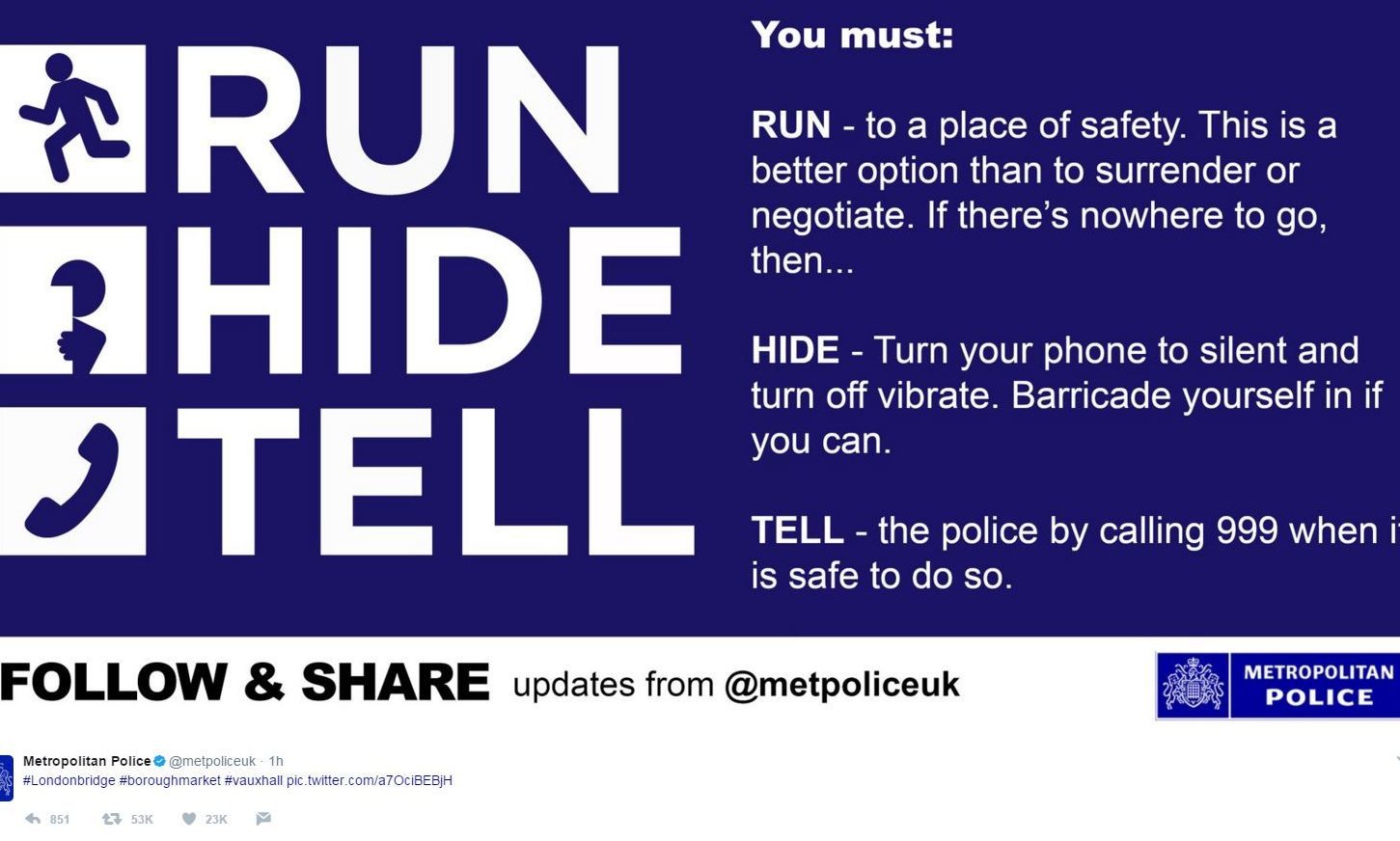
POLICE chiefs have warned eyewitnesses to flee the scene of a terrorist attack rather than getting their smartphones out to take photos or record video.
Officers highlighted the recent episode at Parsons Green, where images of a partially exploded bomb on a Tube train were posted online within minutes.
The warning forms part of a new campaign aimed at ensuring children and teenagers know the key safety steps to follow if they are caught up in a terror incident.
In the first initiative of its kind, the UK’s counter-terrorism police network is also calling for the “run, hide, tell” message to be routinely taught in schools as part of the national curriculum.
Britain is facing an unprecedented threat after a wave of atrocities in 2017, including the Manchester bombing, in which a pop concert packed with young fans was targeted.
Met Police Deputy Assistant Commissioner Lucy D’Orsi, the national policing lead for protective security, said: “We appreciate that talking to young people about terrorism can be scary, for parents and children alike.
“But the atrocities in London and Manchester have sadly resulted in some of the youngest victims of terror this country has ever seen, and if we are able to teach children to act in a way which could potentially save their lives then it is our responsibility to do so.
“We are particularly concerned when we see people – young and old – using their mobiles to film scenes when they should be moving away from the danger. The recent incident in Parsons Green is a good example of this.
“Our research showed that many young people think filming would be a good thing to provide evidence for police. We must get them to understand that the priority must be their safety.”
Police have run a number of public information campaigns highlighting the main advice to follow if an attack happens.
It states that people should run if they can, or if not hide, and then alert authorities of the danger only when it is safe to do so.
Now security experts have drawn up a version for children and teenagers – including the instruction not to stop and use their phones until they are safely away from danger.
As part of the drive police want to see the message taught in schools and colleges to 11 to 16-year-olds as part of the “citizenship” plank of the national curriculum.
A “run, hide, tell” emoji has been created for the campaign, which is being supported by celebrities including TV star Bear Grylls and England footballer Jamie Vardy as part of a collaboration between police and The Sun.
Grylls said:”I’ve tackled some of the most dangerous environments on earth, but in the event of a terrorist attack there is only one thing I would advise: run, hide, tell.”
The NSPCC said it has received 300 contacts from young people anxious about terrorism since April.
John Cameron, head of helplines at the charity, said: “Adults can help a child by listening to their worries, reassuring them these events are rare, and teaching them to run, hide, and tell.
“Although these conversations might be difficult, the spate of devastating events means that they cannot be brushed under the carpet and we all have a duty to help every child stay safe.”

Enjoy the convenience of having The Sunday Post delivered as a digital ePaper straight to your smartphone, tablet or computer.
Subscribe for only £5.49 a month and enjoy all the benefits of the printed paper as a digital replica.
Subscribe